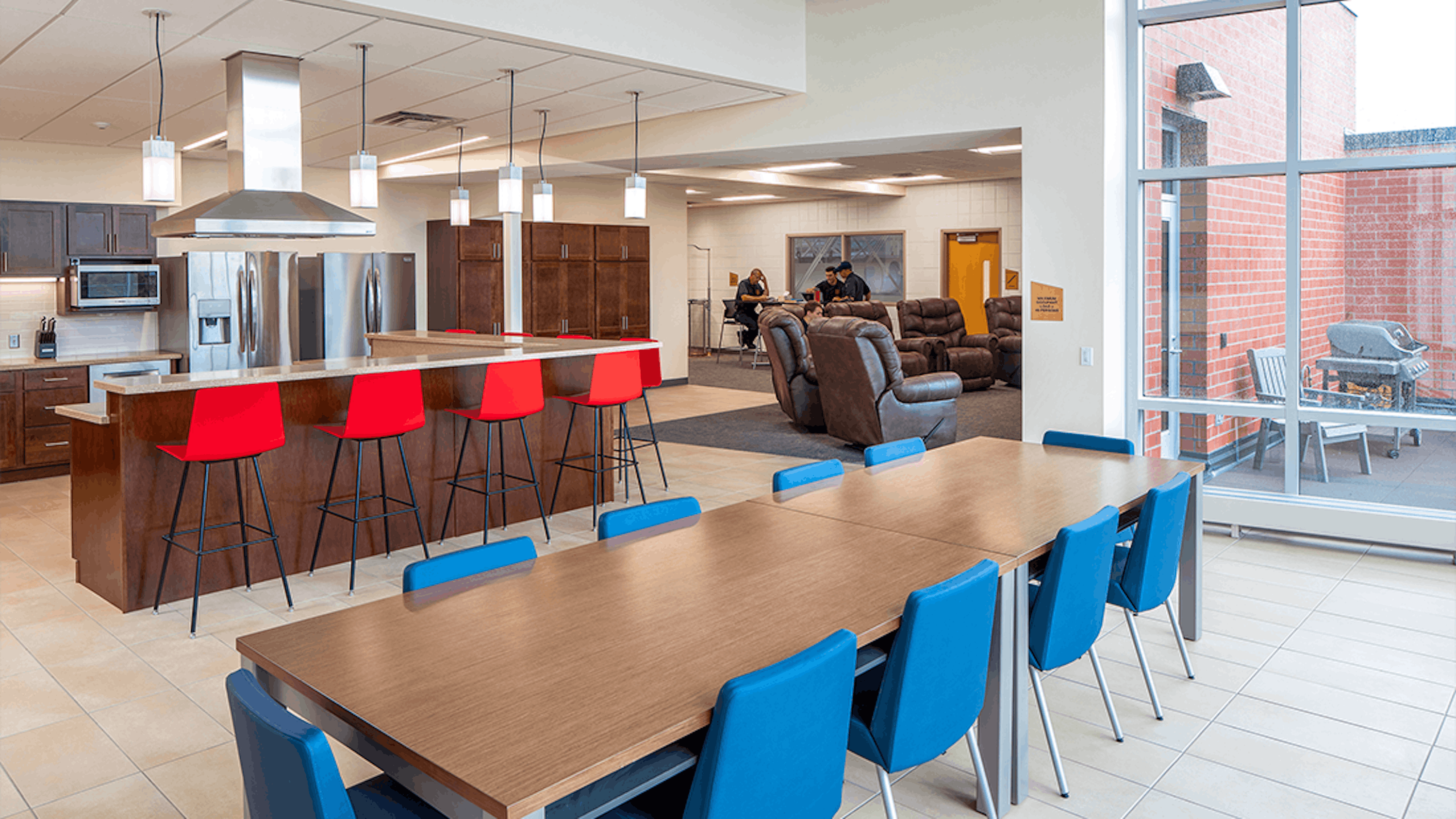
The health and wellness of people at the fire scene is a top priority for your team. Though, one area that may be going unnoticed is the health and wellness of individuals at your own station. According to the National Institute for Occupational Safety and Health (NIOSH), firefighters face a nine percent increase in cancer diagnoses and a 14 percent increase in cancer-related deaths compared to the nation's general population. Lingering contaminants transferring from fire scenes are commonly seen as the culprit for this increased risk of cancer. On top of issues related to cancer, other wellness concerns continue to be prevalent for firefighters, including stress, cardiac health issues and issues related to COVID-19. Our team at Wold Architects and Engineers is taking a steadfast approach to mitigate these concerns by ensuring our fire station design includes up-to-date protocols and evolving architectural responses.
Dirty bunker gear is no longer worn as a badge of honor and courage as it once was. Today, It is a well-known fact that dirty equipment leads to more cases of cancer in firefighters. Much has already been written, and fire station design has evolved, about decontamination protocols and building features that enhance decontamination when returning from a fire event (which can be viewed here). Even older stations have implemented operational changes that minimize contamination and require gear to be cleaned regularly. This article assumes you have already embraced the benefits of decontamination protocols and have implemented many of these best practices in your station. As mentioned earlier, we as architects believe many other health and wellness concerns could be alleviated through a thoughtful fire facility design.
Changing old habits is a common approach that helps decrease health risks. Beyond new practices around decontamination and cleaning of gear, creating communal spaces that move firefighters out of the apparatus bay(s) needs consideration. In the past, apparatus bays were designed for storage of fire apparatus, though were informally used as multi-purpose rooms (which was not necessarily the intended use). Remember older stations that included kitchens that opened into the bays to host community breakfasts or other social events? In recent years, we have moved away from encouraging these large gatherings, to minimizing them or moving them to other areas. Studies have shown that contaminants in apparatus bays can increase cancer risks, and hanging out in this area would increase exposure. Although bays' sizes are not decreasing, our team believes the approach to contaminant-free spaces must be prioritized. We think your station's design or renovation must be deliberate in delineating where staff and the public are safe from contaminants and where there is higher risk.

Richfield Fire Station - Apparatus Bay
It is also essential to provide multi-purpose spaces for fire fighting teams to assist with a variety of functions. This potentially means providing common areas that are divided for different activities, while flexible for larger gatherings. This can also mean quiet rooms that facilitate training or stress decompression for a firefighter. One other area we see potentially change occurring is in the dorm rooms of a station. Some stations still believe in communal sleeping or semi-private sleeping areas, but this often does not allow for restorative sleep. Current best practices would have individual sleeping rooms for each firefighter and state-of-the-art station alerting systems that only wake the team that needs to respond to the emergency. Modern alerting systems will ramp up the lights and sound slowly, so it is not as abrupt. This allows firefighters to wake quickly, but without enduring the negative impacts of an adrenaline boost caused by a loud noise or bright light. Overall, these design ideas will mitigate stress and improve the wellness of your team.

Cottage Grove Fire Station - Communal Space
Along with the harsh contaminants located on-site, there are several aspects of firefighters' lives that can have an impact on their mental wellness. One overarching issue for firefighters nationwide is the stress associated with job duties. Often put in high stake environments, firefighters commonly see increased risks of cardiac health issues. The United States Fire Administration names heart attacks as the leading cause of death for active-duty firefighters. To address these concerns, fire stations should provide a more normative environment to allow firefighters an opportunity to relax in a setting that is more like being at home. As a result, this space encourages social interactions and communal dining by making room to host family and friends.
Creating an environment that emphasizes healthy habits is also a commonality seen in new station design. To lower the risk of medical conditions later in life, new stations feature areas dedicated to improving firefighters' overall health. This includes dedicated workout spaces, multi-purpose rooms that can be used for meditation and yoga and are flexible enough for large gatherings. We also see an increase in water fountains, many with bottle filling attachments, to promote hydration. These spaces should have a distinct separation from apparatus bays where they would be exposed to harsh toxins and provide opportunities to develop healthy habits that will reduce health risks long-term.

Cottage Grove Fire Station - Communal Space
For firefighters, a station becomes a second home and it should be a safe place to live and work. Our team is committed to our first responders and wants to ensure that our fire station designs are equipped with features necessary to provide a safe and engaging environment that promotes these courageous individuals' health and wellness. Moving past traditional ways of thinking about how a station can be designed, our team is dedicated to improving firefighters' wellness in the communities we serve. If you have any questions, do not hesitate to reach out to our team at Wold Architects and Engineers. Get in touch with us at 1-888-254-6789 or email info@woldae.com.